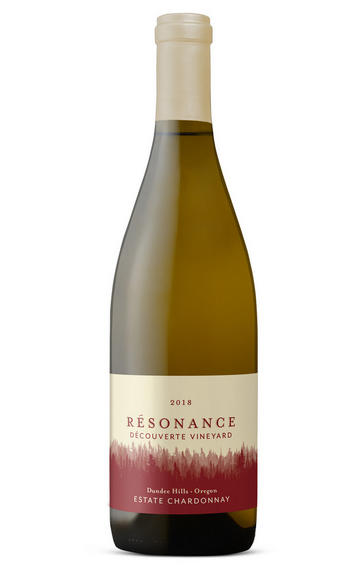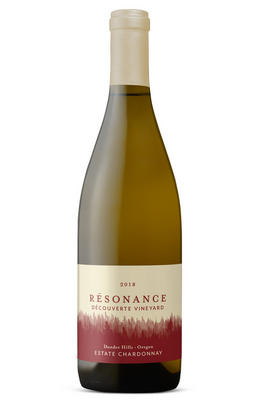
2018 Résonance, Découverte Vineyard Chardonnay, Dundee Hills, Oregon, USA

About this WINE

Resonance Vineyard
Résonance is Maison Louis Jadot’s first wine project outside of Burgundy since their founding in 1859. The project is led by famed Jadot Winemaker, Jacques Lardière, who takes over 40 years of experience in the rolling hills of Burgundy and applies it in one of the most exciting nascent Pinot Noir regions in the world.
It took several years for the Jadot team to find the ideal location in the Willamette Valley, but their patience paid off and finally they could kick the Résonance project off.
The Willamette Valley Pinot Noir is a blend of the finest vineyards in the valley and includes grapes from the estate owned single vineyards Résonance and Découverte. The result is a cuvée which offers an authentic representation of the region. Imagine combining the elegance, complexity and crunchy fruit of Burgundy with the benefits of a bit of American sunshine.

Oregon
While similarities might be drawn between Califonia and Bordeaux, Oregon is very much the American equivalent of Burgundy, with only 5,500 hectares planted in 2004. Since the 1960s a plethora of small growers have shunned the sun further south for the often damp, cool climate west of the Cascade Mountains, seeking out propitious sites to plant their beloved Pinot Noir among the 150-mile Willamette Valley AVA.
Pinot Gris has also taken hold of this corner of the Pacific Northwest; Chardonnay has been less successful due to inappropriate clonal selection. Domaine Drouhin Oregon is arguably the region's top producer, with most of the wine from this region swallowed up by the thirsty North American market.

Chardonnay
Chardonnay is often seen as the king of white wine grapes and one of the most widely planted in the world It is suited to a wide variety of soils, though it excels in soils with a high limestone content as found in Champagne, Chablis, and the Côte D`Or.
Burgundy is Chardonnay's spiritual home and the best White Burgundies are dry, rich, honeyed wines with marvellous poise, elegance and balance. They are unquestionably the finest dry white wines in the world. Chardonnay plays a crucial role in the Champagne blend, providing structure and finesse, and is the sole grape in Blanc de Blancs.
It is quantitatively important in California and Australia, is widely planted in Chile and South Africa, and is the second most widely planted grape in New Zealand. In warm climates Chardonnay has a tendency to develop very high sugar levels during the final stages of ripening and this can occur at the expense of acidity. Late picking is a common problem and can result in blowsy and flabby wines that lack structure and definition.
Recently in the New World, we have seen a move towards more elegant, better- balanced and less oak-driven Chardonnays, and this is to be welcomed.


Buying options
Add to wishlist
Description
A lovely pale lemon in the glass, the wine is a little closed on the nose when first poured, but after a little swirl and a couple of minutes it opens up beautifully to reveal hints of citrus and white flowers then ripe tropical notes and a nutty, yoghurt whiff on the end. On the palate white flowers and stone fruits; white peaches and a hint of nectarine are first then a topical wave of ripe pineapple follows on the mid palate with blanched almonds and a honeyed note on the finish. Great balance with mouth-watering acidity and a long lingering finish. Drink 2022-2030.
Tara Field, Private Account Manager (February 2021)
Produced from Chardonnay exclusively from the Découverte Vineyard in the Dundee Hills. The vineyard is predominantly planted with Pinot Noir, but the 2.5 acres of Chardonnay produce a wonderful expression. The nose is rich with white peach, green apple, grass clippings and floral notes. The palate carries more weight that the nose suggests, but with a chalky minerality than adds vibrancy. Layers of orchard fruit combine well with just a touch of pastry and toast. Overall, a lovely Chardonnay. Drink 2022 – 2026.
Paul Keating, Private Account Manager (February 2021)
wine at a glance
Delivery and quality guarantee